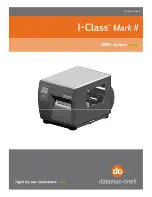
NovaLynx Corporation________________________________________________________________________________
200-WS-02E
Page 7
December 2018
6
MOUNTING
CAUTION: Always be careful when working on equipment that is mounted above you. Do not allow
others to stand below when equipment is being installed as falling objects can be hazardous.
The 200-WS-02E anemometer is often mounted to the top of the supporting mast. A mounting arm
(Part number 200-153) is available for mounting to the side of the mast or tower. The base of the
sensor accepts ¾" IPS pipe size or any other 1" to 1-1/16" (25 to 27 mm) outside diameter pipe.
The mast should be easy to reach for servicing the sensor and should be properly anchored and
grounded. A tilt-down arrangement can eliminate the need for lifts or ladders during installation and
service.
If the supporting mast or tower is metal it should be properly grounded to minimize lightning damage.
It may be necessary in some locations to contact a local contractor to ensure that local electrical codes
have been met by the installer.
Position the wind sensor onto the end of the mast or mounting arm. Align the North indicator label to
geographic (true) north and secure the sensor to the mast using the set screws provided in the sensor
base. Do not use excessive force when tightening the screws. Tighten the screws until the sensor base
can no longer be manually rotated.
NOTE: Wind direction sensors are usually aligned to true north, rather than magnetic north. True north
is usually found by reading a magnetic compass and applying the correction for magnetic declination.
On-line calculators are available to enter your location and obtain the correction factor. One such
website is:
https://www.ngdc.noaa.gov/geomag-web/#declination
7
CABLE INSTALLATION
The PVC jacket of the cable will last for many years outdoors under normal circumstances. In harsh
environments it may be necessary to protect the cable with conduit.
Route the sensor cable down the mast and to the monitoring equipment in the most direct manner.
Leave a "drip loop" of cable below the entry point to the equipment enclosure to help keep moisture
out. Fasten the cable to the mast with cable ties to prevent whipping during high velocity winds. For
best results, use plastic cable ties that are resistant to ultra-violet radiation and place them at two foot
intervals. Do not over-tighten. Avoid sharp bends, excessive twisting, scrapes and nicks.




























